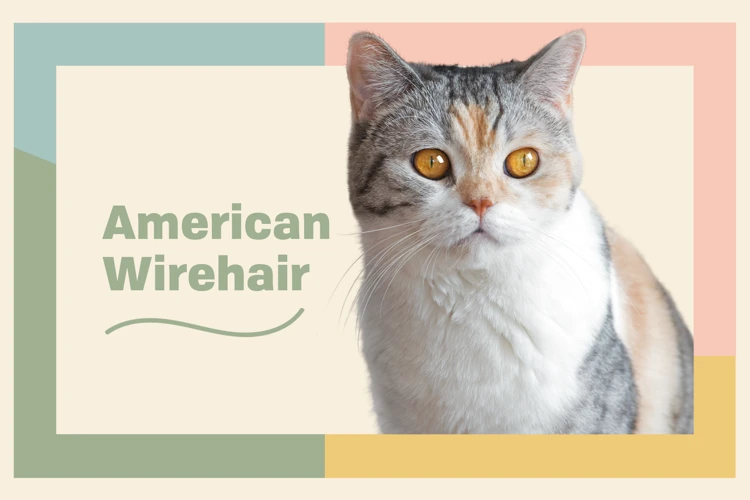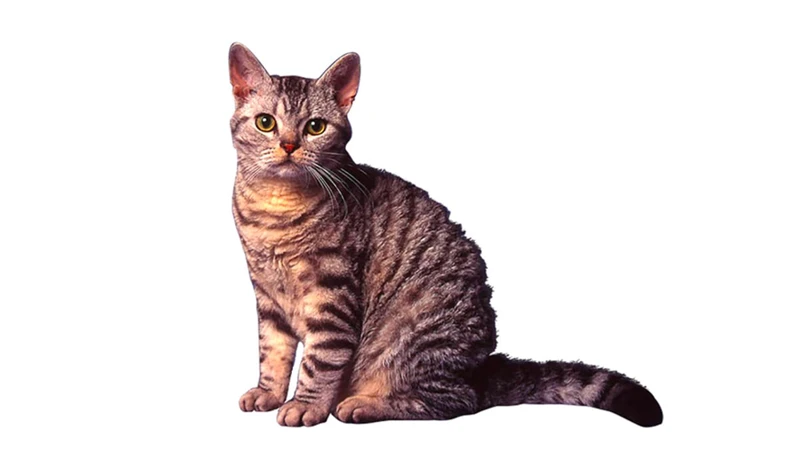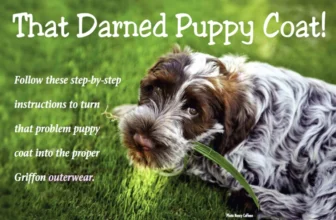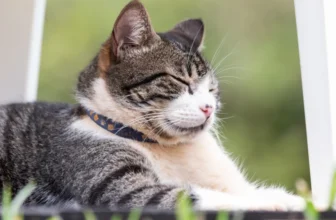Introduction

When it comes to American Wirehair cats, their unique coat texture is what sets them apart from other breeds. Many cat lovers can’t help but marvel at their wiry, crimped hair that gives them a distinct appearance. However, have you ever wondered what causes this texture in their coat? Turns out, genetics play a crucial role in determining the texture of their hair. In this article, we’ll delve into the various genetic factors that influence the coat texture of American Wirehair cats. We’ll also explore how breeders selectively breed these cats to maintain their signature coat texture, and how other factors like diet and grooming can affect their coats.
The Unique Texture of American Wirehair Coats
American Wirehair cats have a uniquely wiry and springy coat texture that sets them apart from other breeds. The texture of their coat is rough to the touch due to the tight, curled hair follicles that give it a crimped appearance. This texture is a defining characteristic of the breed and is a result of genetic factors as well as other influences like grooming and diet.
The American Wirehair coat is low maintenance and does not require daily brushing to keep it tangle free. However, it is still important to groom them regularly to help shed loose hair and prevent matting. Contrary to popular myth, the American Wirehair coat is not hypoallergenic. All cats produce allergens, and while some breeds produce fewer allergens than others, no breed is completely hypoallergenic.
The unique texture of an American Wirehair’s coat is a result of many factors, including genetics, diet, and grooming habits. Their coat is a defining trait of the breed and makes them a delight to pet and cuddle with. To maintain their coat’s texture, owners should follow proper grooming practices and ensure that their diet is balanced and nutritious. For more information about the specific traits and patterns of the American Wirehair coat, check out our article on American Wirehair coat traits.
Genetic Factors

The American Wirehair breed is known for its unique coat texture, which sets it apart from other domestic cats. This unusual fur has fascinated cat lovers for decades, inspiring many myths and misconceptions. However, the truth is that the distinctive wirehair coat is the result of a specific genetic makeup. There are several key genes that contribute to the texture and appearance of American Wirehair coats, including the Aw and FGF5 genes. Understanding the role of these genes in coat texture can help breeders and owners alike to maintain healthy, beautiful coats for their pets. In this section, we will delve into the genetic factors that play a crucial role in shaping the American Wirehair’s coat texture. Evolution of the American Wirehair Coat has played a significant role in shaping these genetic factors.
The Aw Gene and Wirehair Coats
One of the most interesting genetic factors affecting the coat texture of American Wirehair cats is the Aw gene. The presence of this gene in a cat’s DNA is what creates the unique crimped and wiry hair characteristic of American Wirehairs.
What is the Aw gene?
The Aw gene is a dominant gene that causes the hair to have a bent or hooked shape instead of being straight. This is what gives American Wirehairs their unique textured fur. However, it is important to note that not all cats with the Aw gene will have wirehair coats. The degree of the wiriness can also vary among cats.
The role of genetics in coat texture
The genetics of coat texture is a complex subject. While the Aw gene has a significant impact on coat texture, it is not the only gene that plays a role. The length and thickness of the fur are also influenced by other genes, such as the FGF5 gene.
Breeding for the Aw gene
Breeders who want to produce American Wirehair cats with consistent coat textures will need to select breeding pairs with the Aw gene. However, as noted earlier, not all cats with the Aw gene will have a wirehair coat. Breeders will also need to carefully consider other genetic factors in their breeding program to produce cats with specific coat characteristics.
The importance of myths about American Wirehair coat textures:
There are many myths about American Wirehair coat textures circulating around the internet. One common myth is that brushing or grooming American Wirehairs will cause their coat texture to become curly. In reality, the Aw gene is what determines the texture of the hair, and grooming has no effect on this genetic characteristic. You can read more about myths about American Wirehair coat textures in the article “/american-wirehair-coat-myths/”.
Tips for grooming American Wirehairs
While grooming may not affect the texture of an American Wirehair’s coat, it is still an important part of their overall care. Regular brushing can help prevent matting and keep loose fur under control. You can read more about how to groom American Wirehairs in the article “/groom-american-wirehair-coat/”.
The Aw gene plays a significant role in determining the unique texture of American Wirehair coats. However, this is just one aspect of the complex genetics of coat texture. Breeders who want to produce consistent wirehair coats will need to consider multiple genetic factors in their breeding program. Additionally, while grooming may not affect coat texture, regular care is still essential for maintaining an American Wirehair’s healthy and attractive appearance.
The FGF5 Gene and Coat Length
The length of a cat’s coat is another characteristic that is influenced by their genetics. Specifically, the FGF5 gene plays a role in determining coat length. FGF5 is a protein that regulates hair growth in cats, dogs, and many other mammals.
How Does the FGF5 Gene Affect Coat Length?
The FGF5 gene comes in two forms: a long version, and a short version. Cats with two copies of the long version have longer hair, while cats with at least one copy of the short version have shorter hair. This gene is not exclusive to American Wirehair cats, but it does play a role in determining their unique coat texture.
Breeding for Coat Length in American Wirehairs
Breeders can use genetic testing to determine if their cats carry the long or short version of the FGF5 gene. By selecting cats with the desired gene combinations, they can produce litters with consistent coat lengths. However, it’s important to note that breeding for coat length alone is not the only factor in producing high-quality American Wirehair cats.
Other Factors Influencing Coat Texture
While genetics play a major role in determining coat texture, other factors such as diet and grooming practices can also impact a cat’s coat. For example, a cat with a poor diet may have dry, brittle fur, while a cat that is not groomed regularly may have mats and tangles in their coat. By taking a holistic approach to cat care, breeders and pet owners alike can help their American Wirehair cats develop healthy, shiny coats that show off their unique textures and patterns.
The FGF5 gene plays a crucial role in determining coat length in American Wirehair cats. Breeders can use genetic testing to produce litters with consistent coat lengths, but other factors such as diet and grooming practices also play a role in developing a cat’s coat texture. For more information about American Wirehair coat patterns, check out our article on American Wirehair Coat Patterns.
Breeding for Coat Texture

Breeding American Wirehair cats with desirable coat texture is a complex process that requires careful planning and execution. Breeders must consider various genetic factors that influence coat texture, as well as other external factors that can affect the outcome of their breeding efforts. In this section, we’ll explore some of the key considerations and strategies that cat breeders use when breeding for coat texture. From selective breeding practices to maintaining consistent coat texture across lines, there’s much to consider when it comes to breeding these charming felines. Let’s delve deeper into the fascinating world of American Wirehair genetics.
Creating Wirehaired Cats through Selective Breeding
Selective breeding is the process through which cat breeders aim to standardize certain characteristics in a particular breed. In the case of American Wirehairs, wirehair coats are the main trait that breeders seek to produce through selective breeding. The process involves mating cats that show wirehair coats, thereby increasing the probability that their offspring will inherit the same coat texture.
How Selective Breeding Works
Selective breeding involves identifying certain traits, such as coat texture, that are desirable in American Wirehairs, and selectively mating cats that display those traits. Breeders typically keep detailed records of the lineage of their cats, tracking which cats have wirehair coats and how often they appear in their offspring. This is done to ensure that the trait remains consistent throughout the breeding process.
To create wirehaired cats, breeders typically mate two cats with wirehair coats. The offspring from this pairing are more likely to produce wirehair coats than cats with straight hair coats. This is because the gene responsible for wirehair coats, the Aw gene, is dominant, which means that if one parent has the gene, there is a high likelihood that the offspring will inherit it as well.
The Risks of Selective Breeding
While selective breeding can produce consistent coat textures and other desirable traits in American Wirehairs, it also has its risks. For example, the process can lead to genetic disorders in the breed if not done carefully. Breeders need to ensure that they are not mating close relatives, as this increases the likelihood of genetic disorders. Additionally, using only a small pool of cats for breeding can lead to a lack of genetic diversity, which can also increase the likelihood of genetic disorders.
Conclusion
Selective breeding is a critical process in producing wirehair coats in American Wirehairs. It involves identifying and selectively mating cats with the desired coat texture, then tracking their lineage to maintain consistency. While the process has its risks, it remains an essential tool in breeding for desirable traits in American Wirehairs.
Maintaining Consistent Coat Texture in American Wirehair Lines
Maintaining the consistent coat texture of American Wirehair lines is an essential aspect of ensuring the breed’s integrity. The following are some tips for breeders who want to ensure that their American Wirehairs have the proper coat texture:
- Regular Grooming: Proper grooming is critical to ensuring a healthy and consistent coat texture. Wirehairs should be groomed using a metal comb, which can help remove any loose or matted fur and detangle the coat.
- Avoid Over-Breeding: Over-breeding can lead to inconsistent coat textures, as the genetics become diluted. Breeders should carefully select cats with desirable coat textures and avoid breeding with cats that have poor coats.
- Screen Breeding Stock: It’s important to regularly screen breeding stock for genetic conditions that can impact coat texture. This can help breeders choose cats with the desired coat texture and avoid breeding cats that may produce offspring with undesirable coats.
- Proper Nutrition: A cat’s diet can also impact its coat texture. Providing a high-quality diet that is rich in essential nutrients can help promote healthy skin and fur, resulting in a consistent coat texture.
- Avoid Environmental Stressors: Environmental stressors such as extreme temperatures and exposure to harsh chemicals can lead to inconsistent coat textures. By minimizing stressors and keeping the cat’s environment stable, breeders can help ensure that cats maintain a consistent and healthy coat texture.
By following these tips, breeders can help ensure that their American Wirehairs have the proper coat texture and continue to contribute to this unique and beloved breed.
Other Factors Affecting Coat Texture
When it comes to the texture of an American Wirehair’s coat, genetics undoubtedly plays a significant role. However, that is not the only factor that affects the quality and appearance of the fur. This section will explore other elements that can influence coat texture, such as diet and nutrition and grooming practices. By understanding and implementing these factors, you can help maintain a healthy and lustrous coat for your American Wirehair.
Diet and Nutrition
It’s well known that proper diet and nutrition are fundamental for overall health and well-being of cats. But did you know that they also play a role in the texture of their coats, including that of the American Wirehair?
Essential Nutrients: Proper nutrition and a balanced diet are crucial for maintaining healthy skin and fur of your beloved feline. Essential nutrients like proteins, amino acids, and fatty acids aid in the growth of healthy hair and skin cells. Without these ingredients, your cat’s coat may become dull, brittle, and even fall out, affecting the texture.
Omega-3 and Omega-6 Fatty Acids: These essential fatty acids have been shown to promote healthy skin and a shiny, thick coat in cats. Omega-3s can be found in fish, flaxseed, and fish oil supplements, while Omega-6s are abundant in poultry, nuts, and seeds.
To properly understand how to provide your cat with the necessary nutrients, it’s important to know that cats are obligate carnivores, meaning that they require a high-protein diet from animal sources. This is because they aren’t able to produce some amino acids, which are essential building blocks for proteins that keep their skin and coat healthy. It’s crucial to provide them with high-quality protein sources, such as chicken, turkey, fish, and beef.
Additionally, make sure your cat has access to clean drinking water at all times. Dehydration can have an adverse effect on the texture of their coat.
It’s also important to note that obesity can lead to skin and coat problems in cats. So, it’s important to maintain a healthy weight by providing a balanced diet, avoiding overfeeding, and incorporating exercise into your cat’s daily routine.
By providing your American Wirehair with a well-balanced and protein-packed diet, rich in omega-3 and omega-6 fatty acids, and maintaining a healthy weight, you can help promote and maintain their unique wirehair coat texture.
Grooming Practices
When it comes to maintaining the unique texture of an American Wirehair’s coat, grooming practices play a crucial role. Here are some key practices to keep in mind:
- Regular Brushing: Wirehaired cats require regular brushing to keep their coats from matting. Daily brushing with a wire comb or slicker brush can help remove loose hair and prevent tangles.
- Bathing: While Wirehairs don’t need frequent baths, occasional bathing can help remove excess oil and dirt from their coats. Use a gentle shampoo specifically designed for cats, and make sure to rinse thoroughly to prevent any residue from irritating their skin.
- Trimming: Wirehairs don’t require any special trimming, but occasional trimming around their paw pads and the bottom of their feet can help prevent matting and keep them comfortable.
- Nail Care: Regular nail trimming is important for all cats, including American Wirehairs. Use a sharp pair of nail scissors or clippers to carefully trim their nails, taking care not to cut the quick.
- Ears and Eyes: Wirehairs are prone to ear infections, so regular ear cleaning with a gentle ear cleaner can help prevent any issues. Wipe away any excess discharge from their eyes with a clean, damp cloth.
By following these grooming practices, you can help maintain the unique texture of an American Wirehair’s coat and keep them healthy and comfortable. Remember to always use gentle and cat-specific products, and consult with your veterinarian if you have any concerns about your cat’s skin or coat health.
Conclusion
In conclusion, it is clear that genetics play a crucial role in determining the unique texture of an American Wirehair’s coat. The Aw gene is responsible for the wirehair texture, while the FGF5 gene affects the length of the coat. Through selective breeding, wirehaired cats can be created and maintained for consistent coat texture in American Wirehair lines.
However, it is important to note that genetics are not the only factor affecting coat texture. Proper diet and nutrition, as well as good grooming practices, can also have an impact on the texture of a cat’s coat. Ensuring that a cat is receiving the necessary nutrients and grooming regularly can help maintain a healthy and shiny coat.
Understanding the genetics behind coat texture can also aid in the proper breeding of cats for desired coat traits. By selecting cats with the desired genes and traits, breeders can create cats with consistent coat texture and improve the overall breed.
In conclusion, genetics, breeding practices, diet, and grooming all play a role in determining the texture of an American Wirehair’s coat. Understanding these factors can lead to the development of healthier, happier cats with beautiful and unique coats.
Frequently Asked Questions
How did American Wirehair cats get their unique coat texture?
The American Wirehair’s coat texture is a result of a spontaneous mutation that occurred in a farm kitten in upstate New York in the 1960s. This mutation caused the hair to have a coarse, springy texture, which led to the development of the American Wirehair breed.
What genes affect the texture of an American Wirehair’s coat?
The Aw gene is responsible for the unique wire-like texture in the American Wirehair’s coat. The FGF5 gene, on the other hand, determines the length of the coat.
Can American Wirehair cats have different coat colors?
Yes, American Wirehair cats can have a variety of coat colors and patterns, just like other cat breeds. However, the texture of their coats will remain the same: coarse and springy.
Can American Wirehair cats be bred with other breeds?
Yes, American Wirehair cats can be bred with other breeds, although it’s important to remember that the Aw gene is dominant, so any offspring will likely inherit the wirehair texture. Breeders may choose to breed a wirehaired cat with a shorthaired cat to create a litter of wirehaired kittens that carry the recessive shorthair gene.
Is it possible for non-purebred cats to have wirehair coats?
It’s rare, but it is possible for non-purebred cats to have wirehair coats if they carry the Aw gene. However, since the mutation that created the American Wirehair breed is rare, it’s unlikely to find a non-purebred cat with the same coat texture.
What is selective breeding?
Selective breeding is the process of choosing certain cats with specific traits and breeding them together to create offspring with those same desirable traits. This is how breeders are able to maintain consistent coat texture in American Wirehair lines.
What is the best way to maintain an American Wirehair’s coat texture?
Since wirehaired cats have a unique coat texture, it’s important to groom them regularly to prevent matting and tangling. A metal comb or slicker brush is recommended to gently brush through their coats and keep them looking smooth and shiny.
Are American Wirehair cats hypoallergenic?
No cat breed is completely hypoallergenic. However, since American Wirehair cats have a coarse, wire-like coat, they may produce fewer allergens than other breeds with softer, fluffier coats.
Do American Wirehair cats make good pets?
American Wirehair cats make great pets for families due to their affectionate and playful personalities. They’re also known for being adaptable to different living situations, whether it’s a small apartment or a larger home.
What should I feed my American Wirehair cat to keep their coat healthy?
A balanced, high-quality diet that is rich in protein and essential fatty acids can help maintain a healthy coat for American Wirehair cats. Adding fish oil or supplements such as biotin can also improve coat health.







